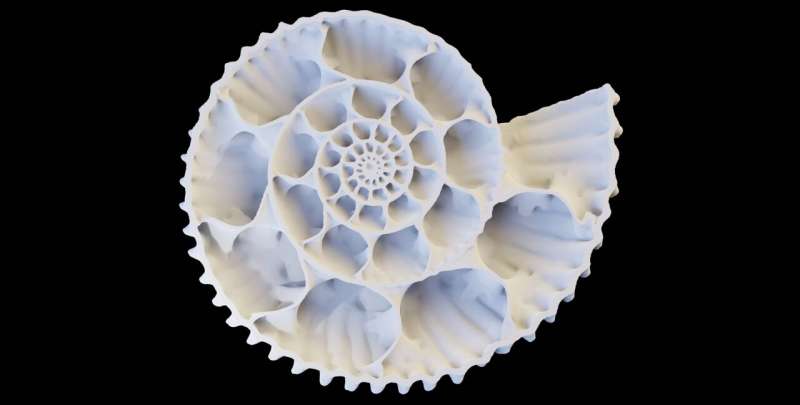Evolving elegance: Scientists connect beauty and safeguarding in ammonoid shells
Originally published by Dresden University of Technology, on August 11, 2023
A Kosmoceras ammonite fossil. A CT scan render. Credit: Robert Lemanis
Ammonoids are a group of extinct marine mollusk animals that are now an iconic fossil group often collected by amateurs. Over 350 million years of evolution, ammonoids developed increasingly elaborate shells with fractal-like geometry. For nearly 200 years, scientists have debated the reason why these animals show a trend of increasing complexity in their shell structures.
Dr. Robert Lemanis and Dr. Igor Zlotnikov from the B CUBE–Center for Molecular Bioengineering at TU Dresden created mechanical simulations of theoretical and computed tomography-based models to unveil a potential explanation: the intricate architecture of these shells may have been nature's ingenious defense strategy against a wide array of predators. Their paper is published in the journal Science Advances.

Comments
Post a Comment